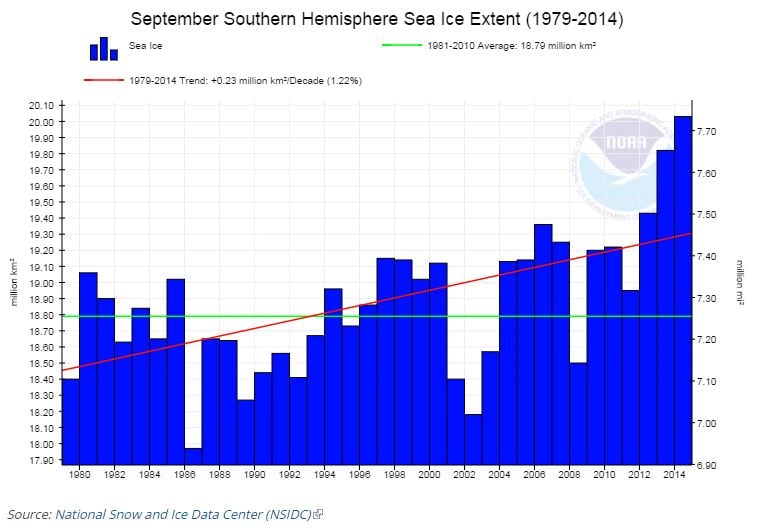Why Is Antarctic Sea Ice at a 35-Year High?
Nobody really knows, but they have some thoughts
Scientists first started routinely tracking the sea ice that surrounds Antarctica in 1979, and of all the years since, none had a higher sea ice extent than this one. According to NASA, 2014 set a new maximum for sea ice around the southern continent: the ice extent peaked at 7.78 million square miles in mid-September.
In the last 30-odd years, though, the world has been slowly warming due to global climate change—which is not usually associated with an increase in ice. So what's going on?
Well, honestly, no one really knows. “It's really not surprising to people in the climate field that not every location on the face of Earth is acting as expected – it would be amazing if everything did,” said one scientist with NASA.
Researchers, according to NASA's release, do have a number of hypotheses about why is the ice extent going up, though:
Melting ice on the edges of the Antarctic continent could be leading to more fresh, just-above-freezing water, which makes refreezing into sea ice easier, Parkinson said. Or changes in water circulation patterns, bringing colder waters up to the surface around the landmass, could help grow more ice.
Snowfall could be a factor as well, Meier said. Snow landing on thin ice can actually push the thin ice below the water, which then allows cold ocean water to seep up through the ice and flood the snow – leading to a slushy mixture that freezes in the cold atmosphere and adds to the thickness of the ice. This new, thicker ice would be more resilient to melting.
It's important to note the increasing trend is quite small and super spiky—there's an average upward trend, but a lot of annual variability.

It's important, too, to realize that this growth is in the extent of sea ice, not in the total amount of ice in Antarctica. Thin ice can cover more area and still be losing mass. Ice on the mainland is also dropping precipitously. And NASA's Joey Comiso's expects that Antarctica's aberrant sea ice to get in line with the rest of global climate change soon enough:
Eventually you’d expect that the Antarctic region would be affected by the long-term effects of greenhouse warming. As the region gets warmer and the ocean heat content increases in the region, we expect that ice extent will start to decline and the trend will reverse and become negative. And maybe in a bigger way, because the most extensive sea ice cover in the world is in the Antarctic region, and the ice cover is generally thinner and easier to melt completely.
/https://tf-cmsv2-smithsonianmag-media.s3.amazonaws.com/accounts/headshot/smartnews-colin-schultz-240.jpg)


/https://tf-cmsv2-smithsonianmag-media.s3.amazonaws.com/accounts/headshot/smartnews-colin-schultz-240.jpg)